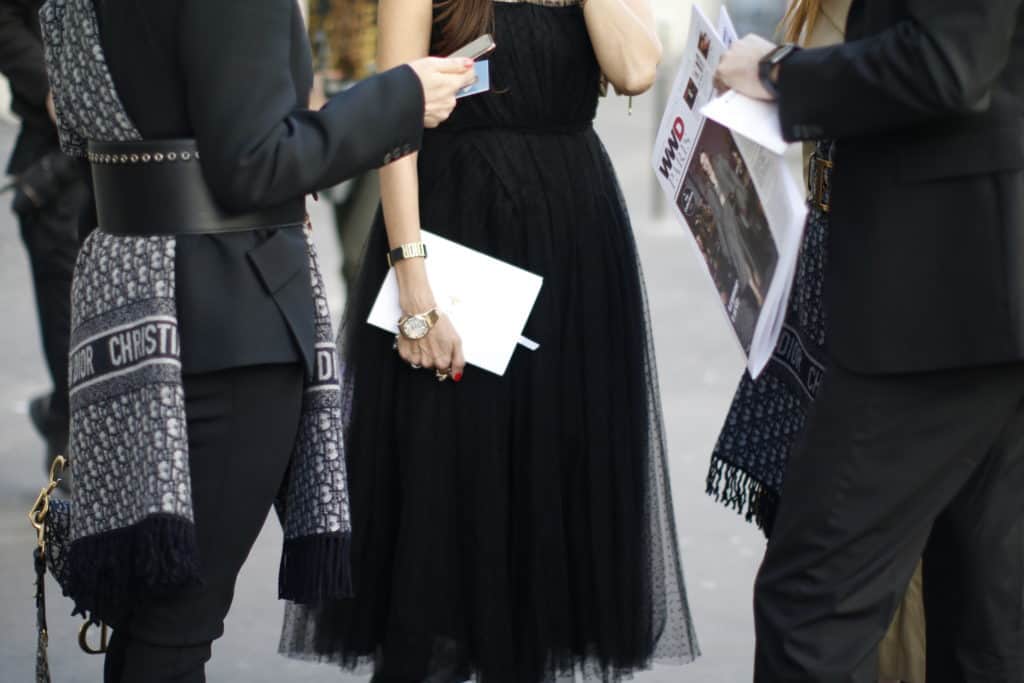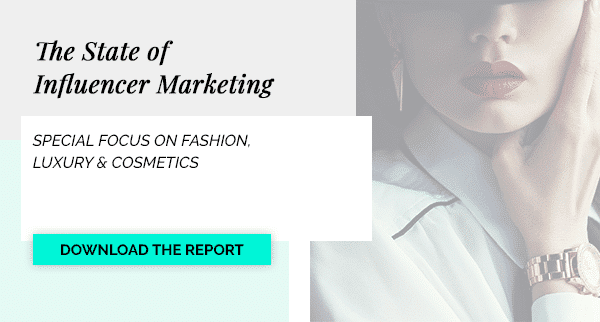“Influencers are just a passing trend,” they said. “Influencer marketing is a bubble waiting to burst,” they said.
After five years of consistently surveying over 600 professionals in the fashion, luxury, and cosmetics industries, as well as surveying over 200 influencers, what we’ve uncovered is quite the opposite: influencer marketing is here to stay, is more professionalized than ever before, and is still a booming marketing practice!
In our 5th annual State of Influencer Marketing report, not only will you find a breakdown of all the stats from our survey, but we’ve also featured success stories of major industry players, interviews with leading professionals – including Cristiana Monfardini, Chief Communication Officer at FENDI – and a data analysis of one of the strongest cases in the fashion industry: Chiara Ferragni.
Here’s a sneak peek of just some of the stats you should know from our influencer marketing report:
5 must-know facts about influencer marketing in 2019
1. Generation Z is here.
When asked which generation they target with their influencer campaigns, the majority of professionals in fashion, luxury and cosmetics answered “millennials”. However, we’ve witnessed a rising trend year on year: Gen Zers (those between the ages of 6 and 23) are increasingly becoming the focus for brands. The percentage of respondents who claimed to target this young crowd of consumers nearly doubled since 2018.
The importance of this rising generation in our industries is further confirmed by Deloitte’s Global Powers of Luxury Goods 2018 report: “By the year 2025, collectively millennials and Generation Z will represent more than 40% of the overall luxury goods market.”
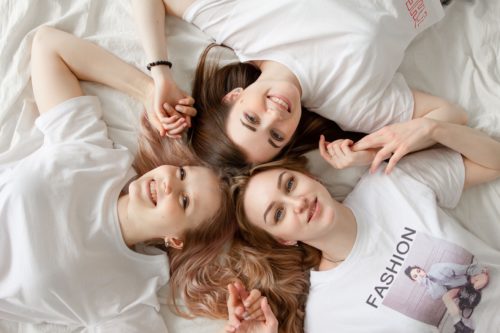
For the first time in our State of Influencer Marketing report, we’ve featured a breakdown by sector in order to offer a deeper understanding of just how influencer marketing is being leveraged in each industry. The results show that out of the 3, the fashion industry is far more focused on Gen Z – 21% of respondents claimed this was their target of choice.
2. Authenticity & audience insights are key.
Industry experts are becoming increasingly savvy when it comes to influencer marketing, which is evident in the fact that they’re placing more importance on audience insights when choosing influencers, rather than looking at the volume of followers. This is the 3rd most important factor for professionals in 2019 (after “rate of engagement” and “content quality”). Influencers grant brands access to new target consumers which is why it is crucial to understand a key opinion leader’s audience before choosing to collaborate with them. Making sure their audience is aligned with a brand’s objectives is imperative.
The fact that professionals are looking more into the quality of an influencer’s audience is also reflected in the fact that respondents in our survey claim they prefer working with Micro Influencers or Mid-Tier Influencers (45.5% and 37.7% respectively). When asked why they preferred lower tiers of influence, 32.1% claimed that Micro Influencers and Mid-Tier Influencers have a better connection with their target audience, meanwhile, the second motive was content authenticity.
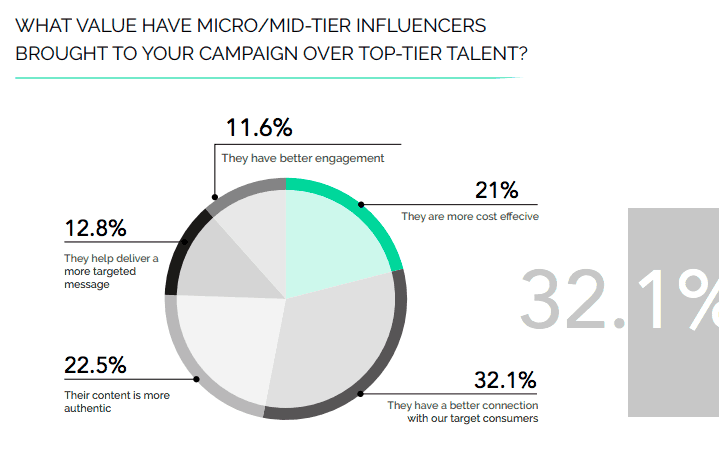
Authenticity is clearly a challenge in this field as sponsored posts become increasingly prevalent, which is why we asked Cristiana Monfardini, Chief Communication Officer at FENDI, how she ensures authenticity when working with influencers, she responded “We look for millennial influencers who want to express their real talent and messages. The new generation is not vapid and haunted by filters, it totally digs talent and meaningful behaviors. The secret is keeping a real conversation with them, not only communicating but also listening to them. It is surprising how much you can learn from the new generations.”
3. Instagram is still king, but Pinterest & YouTube are on the rise.
It’s no secret: when it comes to the leading social channel for influencer marketing, Instagram reigns. According to fashion, luxury and cosmetics professionals this social media platform is the preferred outlet for campaigns with key opinion leaders (it grew from 36% to 46% year on year).
In terms of the formats that work best on Instagram, feed images seem to be the most effective according to professionals, with Stories (not including the swipe-up feature) following closely behind. This could be due to the Instagram Shopping feature which has allowed retailers and brands to link directly to products on their site, through the app. As Instagram rolls out Checkout – the in-app shopping feature which will allow users to purchase products directly on the app rather than being redirected to the brand or retailer’s website – we will most likely see these two formats continue to gain popularity for influencer marketing. Yet, Instagram Live seems to be a still untapped resource.

When asking influencers which platforms they preferred working with, we saw a rise both in Pinterest and YouTube. The number of influencers who turn to these channels to create content has grown by 6.4% and 6.1% respectively.
4. Industry pros are increasingly tech-savvy.
The fashion, luxury, and cosmetics industries have long been notorious for their resistance to adopting technology and digital innovations, which is why it may come as little surprise that 27.5% of professionals still manage influencer relationships manually.
However, this is clearly changing in our industries as, according to our findings, the majority of professionals are understanding the benefits of adopting specialized technologies. An astounding 55.9% of fashion, luxury and cosmetics professionals claim using influencer marketing tools and technologies to identify and manage their relationships with key opinion leaders.
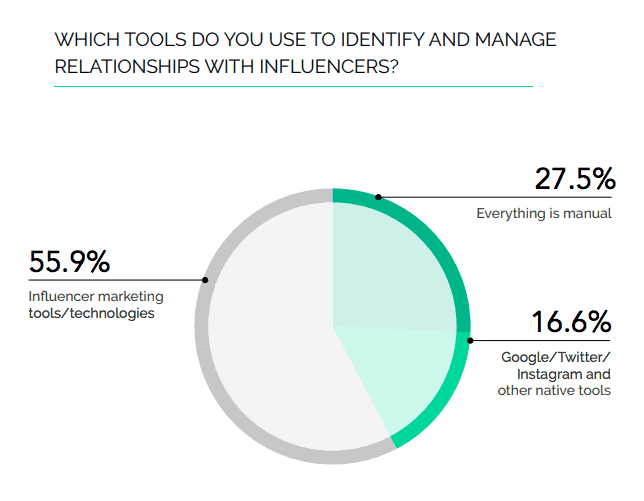
The remaining percentage resort to native tools such as Google or Instagram. Yet, these tools present limitations, confirmed by the fact that the percentage of professionals who claim using these has dropped from 30.5% in 2018 to 16.6% this year.
5. ROI justification: the on-going challenge
The proper measurement of the ROI of campaigns has become business professionals’ main concern (nearly 26% of respondents). And, what is somewhat concerning is that the majority (27%) rely on engagement rate to measure the effectiveness of a campaign.
As Chris Davis, Head of Brand Partnerships at Gleam Futures, told us: “A campaign shouldn’t be measured on likes and comments alone, but through true metrics like sales, brand perception, and conversion propensity. These can be hard to track but we as an industry are getting closer to making this type of measurement standard practice,” and we couldn’t agree more.
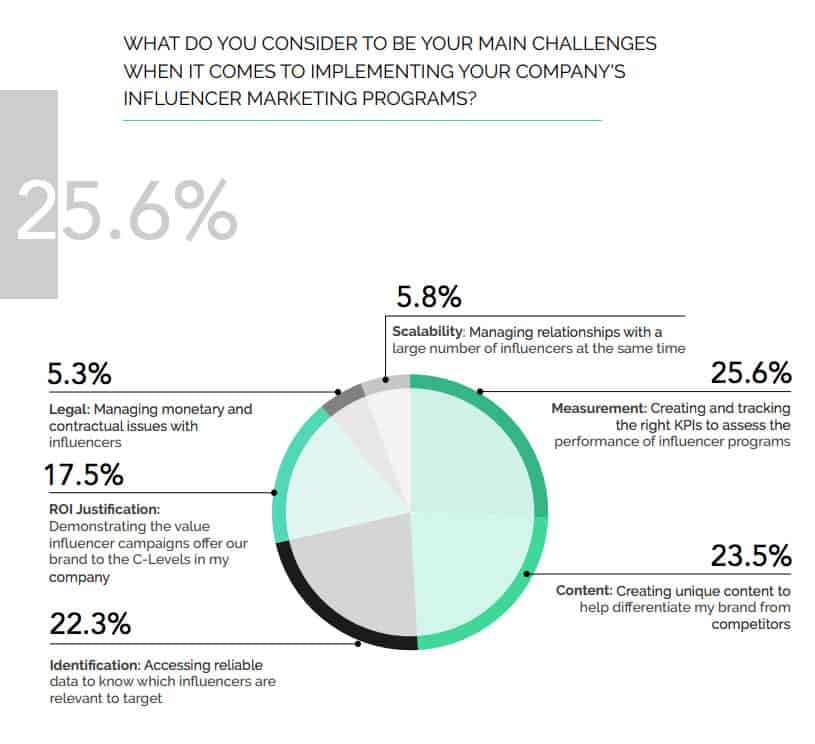
When professionals aim to boost sales through an influencer collaboration, the ROI can be measured thanks to influencers’ direct tracking links to the e-commerce sites. Yet, what if the objective is to generate awareness?
Now with algorithms such as Media Impact Value™ – which assigns a monetary value to every interaction, post, and article – we’re able to understand the ROI and the buzz generated by every post or campaign. And, as the need for ROI justification grows, we’re bound to see industry professionals take advantage of these innovative algorithms for measurement.
Learn all of the Stats
These 5 key takeaways are just a snippet of what you’ll find in our 60-page influencer marketing report. Be sure to access a copy here:
